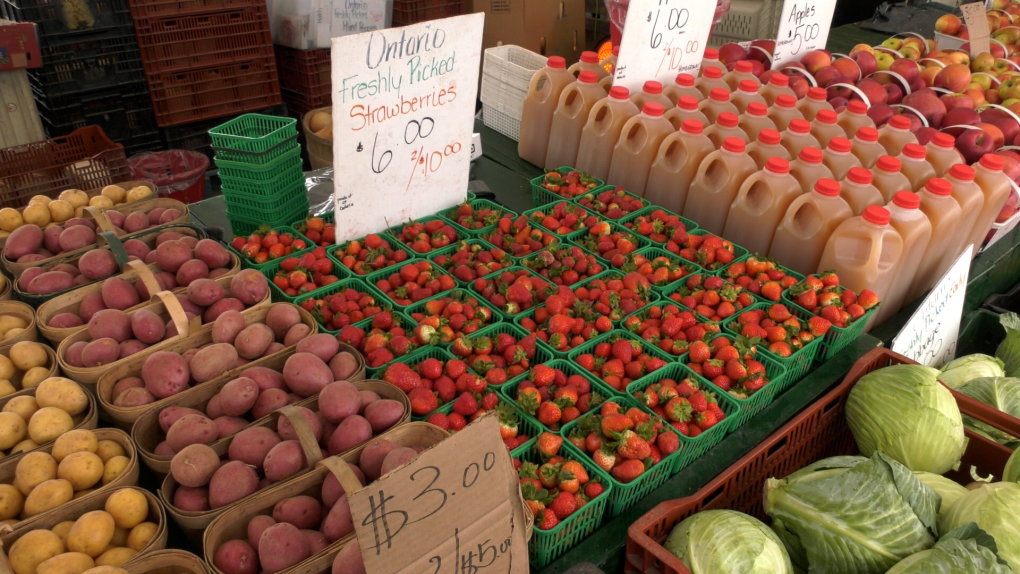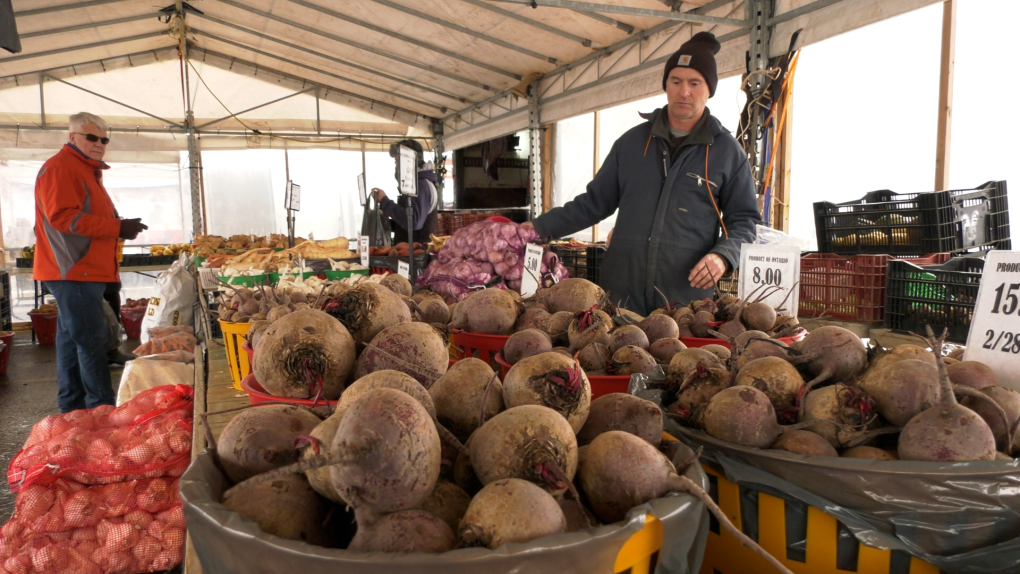Canadian food prices to increase 3 to 5 per cent: report
Canadians could be paying three to five per cent more for groceries next year according to Canada’s Food Price Report for 2025.
“There was no one obvious reason why we're seeing those increases, but instead it's kind of like a mix of a tangled web of those factors,” Kristina Kupferschmidt, a former Machine Learning Researcher from the University of Guelph that worked on the report , said.
Kupferschmidt is now a professor at the University of Prince Edward Island, but worked on the 15th edition of Canada’s Food Report. Kupferschmidt assisted with artificial intelligence modelling on the report. She said A.I. factored in Statistics Canada data, but also things like the U.S. exchange rate, policies on imports and tariffs and changes in the climate.
“Which is a very hard thing to predict [climate], especially because we're seeing more of these extreme and very localized events that are very hard to predict,” Kupferschmidt said.
Meat prices are expected to increase the most, around 4 to 6 per cent.
“Originally when we saw the results, I think we did a bit of a double take, but we really dug into it and it does seem fairly solid that given the data that we have, that is the most likely scenario,” Kupferschmidt said.
Food Price Forecast for 2025 according to Canada's Food Price Report for 2025
| Food categories | Anticipated changes (%) |
| Bakery | 2% - 4% |
| Dairy | 2% - 4% |
| Fruits | 1% - 3% |
| Meats | 4% - 6% |
| Restaurants | 3% - 5% |
| Seafood | 1% - 3% |
| Vegetables | 3% - 5% |
| Other | 2% to 4% |
| Total increase in food prices | 3% to 5% |
 Fruits and vegetables were displayed at St. Jacobs Farmers Market on Dec. 5, 2024. (Dan Lauckner/CTV News)
Fruits and vegetables were displayed at St. Jacobs Farmers Market on Dec. 5, 2024. (Dan Lauckner/CTV News)
Overall, prices in Ontario are expected to hover just under the national average next year, but more Canadians are facing food insecurity. In April, Statistics Canada reported 22.9 per cent of people in the ten provinces lived in a food-insecure household last year.
The new food price report predicts the average family of four will spend $16,833.67 on food next year, an $801.56 increase from last year.
"Well, right now I can afford it. But another 5 per cent, who knows?" A shopper at the St. Jacobs Farmers’ Market said.
"When we're hosting larger meals with larger groups of people it will be much more expensive. I'm hoping that the farmers are able to take a bit of the brunt, so the market prices will remain a little depressed," Dave Fielder, a shopper at the St. Jacobs Farmers’ Market said.
Those who sell food for a living, said this expected increase will make them have to adjust their prices.
“I foresee many of the vegetables and stuff going up in price, because everything with fuel and with labour and everything has gone up," Dan Schumacher, a vendor from Voisin’s Family Farm said. "I anticipate Prices will be going up to 10 to 20 per cent.”
 Vendor Dan Schumacher from Voisins Family Farm sold food at St. Jacobs Farmers' Market on Dec. 5, 2024. (Dan Lauckner/CTV News)
Vendor Dan Schumacher from Voisins Family Farm sold food at St. Jacobs Farmers' Market on Dec. 5, 2024. (Dan Lauckner/CTV News)
Kupferschmidt cautioned the food report is just a prediction, but said the use of artificial intelligence the past few years has helped their predictions become more accurate each time.
"If we look at things like last year, the prediction that we gave and the actual amount for a male was within $60 of the annual expenditure. So it's, it's really quite, quite close,” Kupferschmidt said.
This year, beyond basic statistical models, A.I. also incorporated word data from historical reports, which Kupferschmidt said helped even more.
“So if we're already within $60, I would say that's very good and it allows people to budget. But potentially there's something else we could be doing as well that could give them more insights.” Kupferschmidt said.
Kupferschmidt said the A.I. models ran within a 1 to 2 per cent error score, but adds the system can’t predict if something unheard of happens.
“It's not necessarily that A.I. is better everywhere, it makes strong forecasts, but instead we have these people with really rich economic and food economic expertise, and they can kind of pick our A.I. models and say, 'oh I think we need to adjust it in these ways to account for these factors that the data can't cover,'” Kupferschmidt said.
CTVNews.ca Top Stories

'Canadians deserve a real choice': Justin Trudeau resigning, prorogues Parliament
Prime Minister Justin Trudeau is stepping down as Liberal leader, and is proroguing Parliament as the Liberal Party of Canada embarks on the journey to replace him.
Trudeau resignation: recap key moments, analysis, reaction as it happened
Prime Minister Justin Trudeau has stepped down as Liberal leader. Here's a recap of key moments, analysis, and reaction as it happened.
Justin Trudeau steps down as Liberal leader. Who are the top contenders to replace him?
With Prime Minister Justin Trudeau's resignation as Liberal party leader, several well-known political faces may be waiting in the wings for their opportunity to take his place.
'Together, what a great nation it would be': Donald Trump, Elon Musk react to Justin Trudeau's resignation
Amid news of Prime Minister Justin Trudeau's resignation as leader of the Liberal party on Monday morning, reactions from prominent figures began piling in.
Justin Trudeau is resigning, what will be his legacy? A look back at key political eras
In a seismic political move, Justin Trudeau has announced his intention to step down as leader of the Liberal Party of Canada and prime minister, once his successor is named. This decision comes after more than nine years in the country's top job and nearly 12 years at the helm of his party.
Trudeau says Parliament is 'prorogued' until March. What does that mean?
In his resignation speech on Monday, Prime Minister Justin Trudeau announced that Parliament would be prorogued until March, which will give the Liberal party time to find a new leader ahead of an expected confidence vote and early election.
Justin Trudeau resignation: Here's what he said in Ottawa today
Prime Minister Justin Trudeau delivered a speech about his political future Monday morning outside Rideau Cottage in Ottawa. Here's the message he delivered to Canadians.
Alberta government signs new oil and gas agreement with Enbridge
The Alberta government has signed an agreement with Enbridge that Premier Danielle Smith says will increase exports of the province's heavy oil to the United States.
Trudeau leaves mixed global legacy as he exits during turbulent time, analysts say
Prime Minister Justin Trudeau will leave the world stage with a legacy of promoting feminist causes and focusing on Asia, along with criticism that Canada's actions fell short of the government's rhetoric.






























